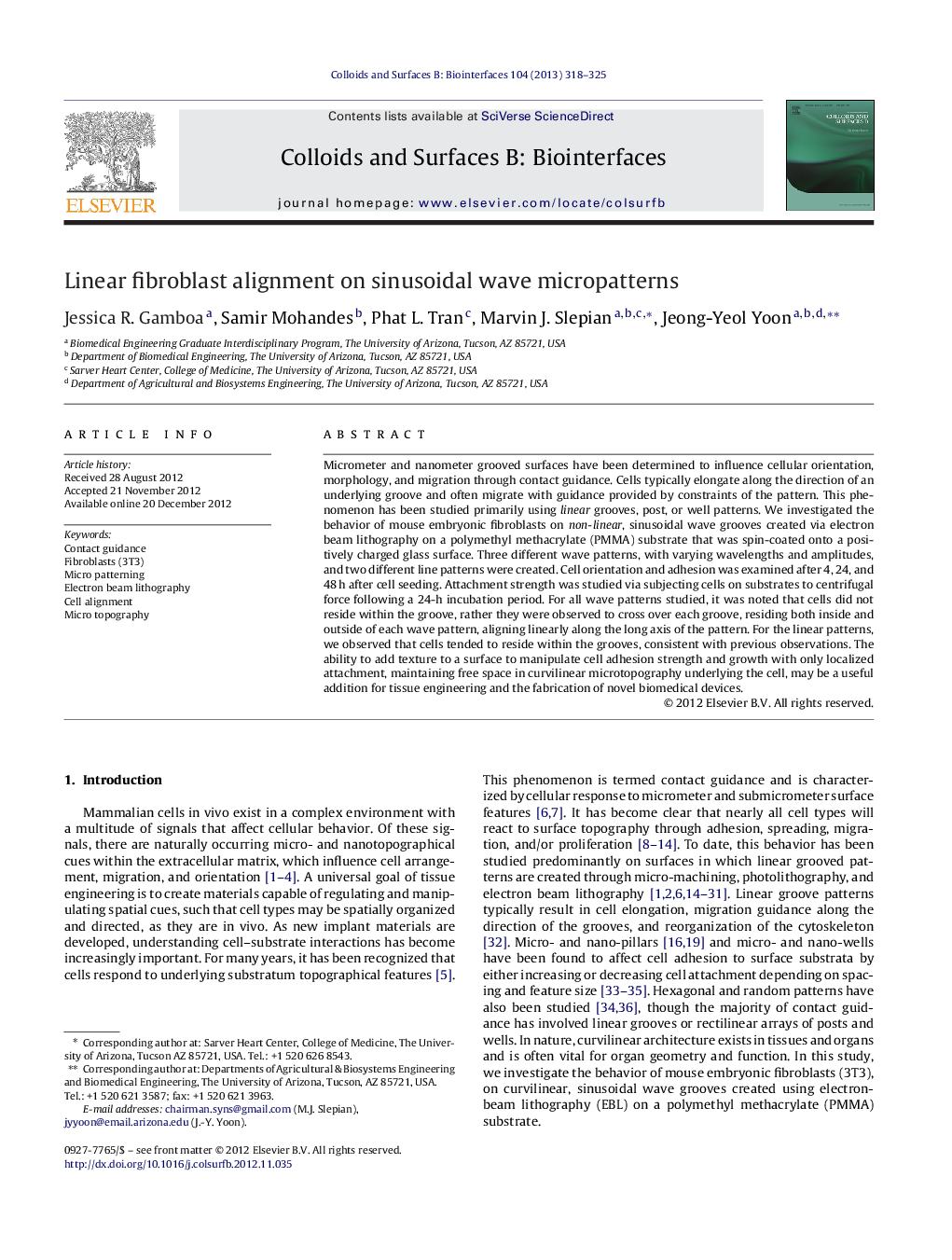| کد مقاله | کد نشریه | سال انتشار | مقاله انگلیسی | نسخه تمام متن |
|---|---|---|---|---|
| 600064 | 1454300 | 2013 | 8 صفحه PDF | دانلود رایگان |

Micrometer and nanometer grooved surfaces have been determined to influence cellular orientation, morphology, and migration through contact guidance. Cells typically elongate along the direction of an underlying groove and often migrate with guidance provided by constraints of the pattern. This phenomenon has been studied primarily using linear grooves, post, or well patterns. We investigated the behavior of mouse embryonic fibroblasts on non-linear, sinusoidal wave grooves created via electron beam lithography on a polymethyl methacrylate (PMMA) substrate that was spin-coated onto a positively charged glass surface. Three different wave patterns, with varying wavelengths and amplitudes, and two different line patterns were created. Cell orientation and adhesion was examined after 4, 24, and 48 h after cell seeding. Attachment strength was studied via subjecting cells on substrates to centrifugal force following a 24-h incubation period. For all wave patterns studied, it was noted that cells did not reside within the groove, rather they were observed to cross over each groove, residing both inside and outside of each wave pattern, aligning linearly along the long axis of the pattern. For the linear patterns, we observed that cells tended to reside within the grooves, consistent with previous observations. The ability to add texture to a surface to manipulate cell adhesion strength and growth with only localized attachment, maintaining free space in curvilinear microtopography underlying the cell, may be a useful addition for tissue engineering and the fabrication of novel biomedical devices.
Figure optionsDownload as PowerPoint slideHighlights
► Fibroblasts may be aligned linearly on sinusoidal wave micropatterns, residing both within and atop of each wave pattern.
► Adhesion strength is not completely limited on wave micropatterns despite decrease in cell–surface contact area.
► Cell surface interaction/adhesion on implant surfaces can be modulated based on cell–surface contact area.
► Underlying free spaces in curvilinear micropatterns may be useful for exposure of cells to fluids (cellular irrigation).
Journal: Colloids and Surfaces B: Biointerfaces - Volume 104, 1 April 2013, Pages 318–325